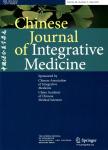Bloodletting Acupuncture at Jing-Well Points on Hand Induced Autophagy to Alleviate Brain Injury in Acute Altitude Hypoxic Rats by Activating PINK1/Parkin Pathway
作者机构:Medical College of Qinghai UniversityXining810001China Qinghai Provincial Key Laboratory of Traditional Chinese Medicine Research for Glucolipid Metabolic DiseasesXining810001China Research Center of Experimental Acupuncture ScienceTianjin University of Traditional Chinese MedicineTianjin301617China
出 版 物:《中国结合医学杂志:英文版》 (Chinese Journal of Integrative Medicine)
年 卷 期:2023年第29卷第10期
页 面:932-940页
核心收录:
学科分类:1005[医学-中医学] 1002[医学-临床医学] 100512[医学-针灸推拿学] 10[医学]
主 题:acute hypobaric hypoxia bloodletting acupuncture at Jing-well points mitochondrial autophagy PINK1/Parkin signaling mitochondrial damage Chinese medicine
摘 要:Objective: To explore the protective effect of bloodletting acupuncture at twelve Jing-well points on hand(BAJP) on acute hypobaric hypoxia(AHH)-induced brain injury in rats and its possible mechanisms.Methods: Seventy-five Sprague Dawley rats were divided into 5 groups by a random number table(n=15),including control, model, BAJP, BAJP+3-methyladenine(3-MA), and bloodletting acupuncture at non-acupoint(BANA, tail tip blooding) groups. After 7-day pre-treatment, AHH models were established using hypobaric oxygen chambers. The levels of S100B, glial fibrillary acidic protein(GFAP), superoxide dismutase(SOD), and malondialdehyde(MDA) in serum were measured by enzyme-linked immunosorbent assay. Hematoxylin-eosin staining and the terminal deoxynucleotidyl transferase-mediated dUTP-biotin nick end labeling method were used to assess hippocampal histopathology and apoptosis. Transmission electron microscopy assay was used to observe mitochondrial damage and autophagosomes in hippocampal tissues. Flow cytometry was used to detect mitochondrial membrane potential(MMP). The mitochondrial respiratory chain complexes Ⅰ, Ⅲ and Ⅳ activities and ATPase in hippocampal tissue were evaluated, respectively. Western blot analysis was used to detect the protein expressions of Beclin1, autophagy protein 5(ATG5), microtubule-associated protein 1 light chain 3 beta(LC3B), phosphatase and tensin homolog induced kinase 1(PINK1), and Parkin in hippocampal tissues. The mRNA expressions of Beclin1, ATG5 and LC3-Ⅱ were analyzed by quantitative real-time polymerase chain reaction. Results: BAJP treatment reduced hippocampal tissue injury and inhibited hippocampal cell apoptosis in AHH rats. BAJP reduced oxidative stress by decreasing S100B, GFAP and MDA levels and increasing SOD level in the serum of AHH rats(P0.05 or P0.01). Then, BAJP increased MMP, the mitochondrial respiratory chain complexes Ⅰ, Ⅲ and Ⅳ activities, and the mitochondrial ATPase activity in AHH rats(all P0.01). BAJP improved mitochondrial swelling and increased the autophagosome number in hippocampal tissue of AHH rats. Moreover,BAJP treatment increased the protein and mRNA expressions of Beclin1 and ATG5 and LC3-Ⅱ/LC3-Ⅰratio in AHH rats(all P0.01) and activated the PINK1/Parkin pathway(P0.01). Finally, 3-MA attenuated the therapeutic effect of BAJP on AHH rats(P0.05 or P0.01). Conclusion: BAJP was an effective treatment for AHH-induced brain injury, and the mechanism might be through reducing hippocampal tissue injury via increasing the PINK1/Parkin pathway and enhancement of mitochondrial autophagy.



